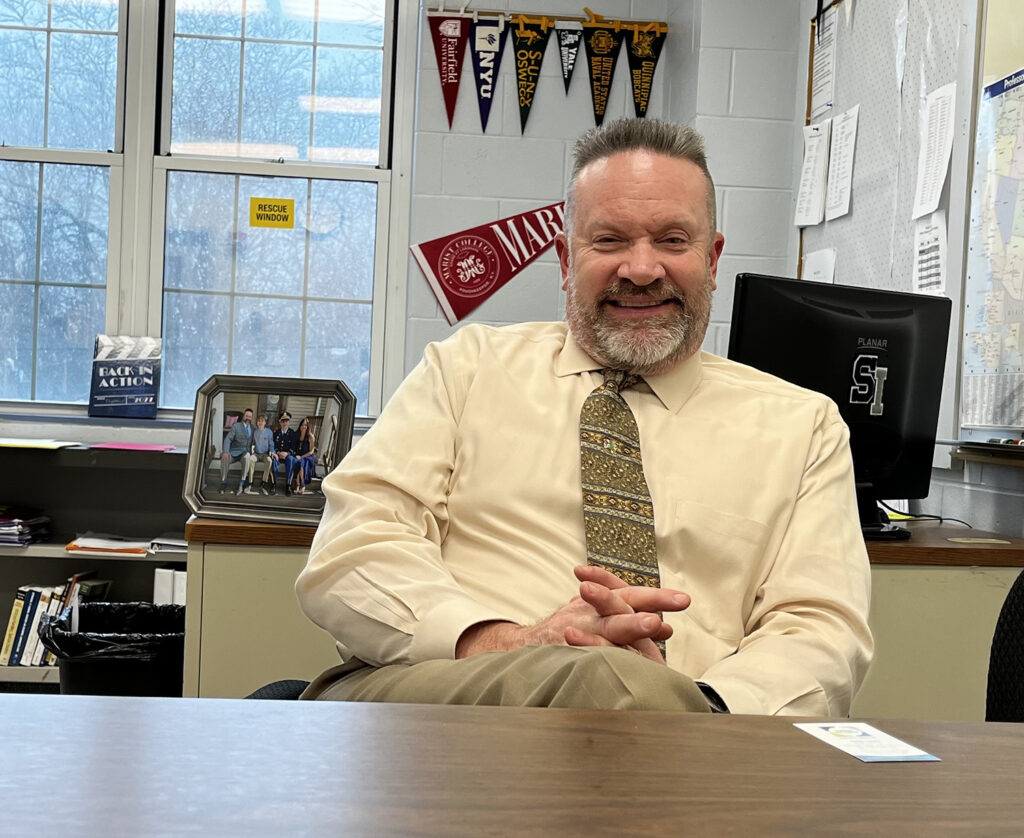Teachers go to head of class in collaborative meeting

Several Shelter Island teachers took center stage at Monday night’s Board of Education meeting on collaborative teaching methods to improve education.
But they weren’t just talking to their own board members, staff and parents. Educational leaders from three neighboring districts were in attendance. Two of superintendents — Southold Superintendent David Gamberg said and Shoreham-Wading River Superintendent Steve Cohen had collaborated with Shelter Island Superintendent Michael Hynes at a Stony Brook University forum at last week to begin a process they believe will improve student outcomes while inspiring their staffs.
“Mr. Cohen summed up last might’s meeting as “exhilarating to be in such a thriving community.”
Mattituck-Cutchogue Assistant Superintendent Anne Smith — soon to take the helm at that district with the retirement at the end of the school year of Superintendent James McKenna — thanked the teachers for offering her the chance to learn from them.
Steering clear of the Common Core standards they believe are stifling creativity, Dr. Hynes, Mr. Gamberg and Dr. Cohen organized last week’s forum with national and international educational experts to seek a better way to improve teaching and learning.
But the forum was only the beginning, they all agreed.
The other superintendents came to Shelter Island to hear about the implementation of collaborative teaching throughout the district. It started in the 2012-13 school year when Dr. Hynes combined kindergarten and first grade classes. But the method took a major leap forward in September 2013 with addtional team teaching at the elementary level, and the creation at the secondary level of two major “houses of learning” — math, science and technology and humanities that combines English and social studies.
Social studies teacher Brian Doelger told the packed meeting room he was inspired by the Stony Brook forum that offered “actual solutions” to improving education. Building on the theme of a book by Andy Hargreaves and Michael Fullan titled “Professional Capital: Transforming Teaching in Every School,” Mr. Doelger said the authors prove collaborative methods are effective, unlike the numerous standards implemented in the United States that are data based, but “not proven to work anywhere.”
“I think we’re on the right path, but time will tell,” Mr. Doelger said, adding that every other day, teachers meet with their collaborators to exchange ideas and implement efforts to improve their own skills and their students’ advancements.
Technology teacher Walter Brigham spoke about successful methods created in the math, science and technology house that enable students to move up levels based on both their abilities, but also on their willingness and enthusiasm. They may start in a mainstream class, but could move into an honors or advanced placement class if they show the knowledge, “grit and determination” needed to tackle the more difficult work. Students are given a year to show their abilities before any decisions are made about moving them, Mr. Brigham said. He described a fluid situation where students capable of more problem solving and critical thinking can be challenged.
“Students have to feel they have the opportunity to succeed,” Mr. Brigham said. He described the collaboration among teachers as “a very free and open place” to agree and disagree with one another.
English teacher Lynne Colligan said the district has consistently served its mainstream and special education students, but is only now providing opportunities for enrichment to those students at the high end. What the humanities house needed was an honors program feeding into advanced placement, Ms. Colligan said.
Collaborative teaching is resulting in smaller class sizes, better teacher planning and students who are more engaged, Ms. Colligan said, pointing out it’s acheiving goals without the expenditure of more money.
Not only did board members applaud the teachers’ presentation about what is happening in the district, but Dr. Cohen started his comments with a question: “Do you have any job openings here?”
Mr. Gamberg called it a “truly incredible presentation.”








